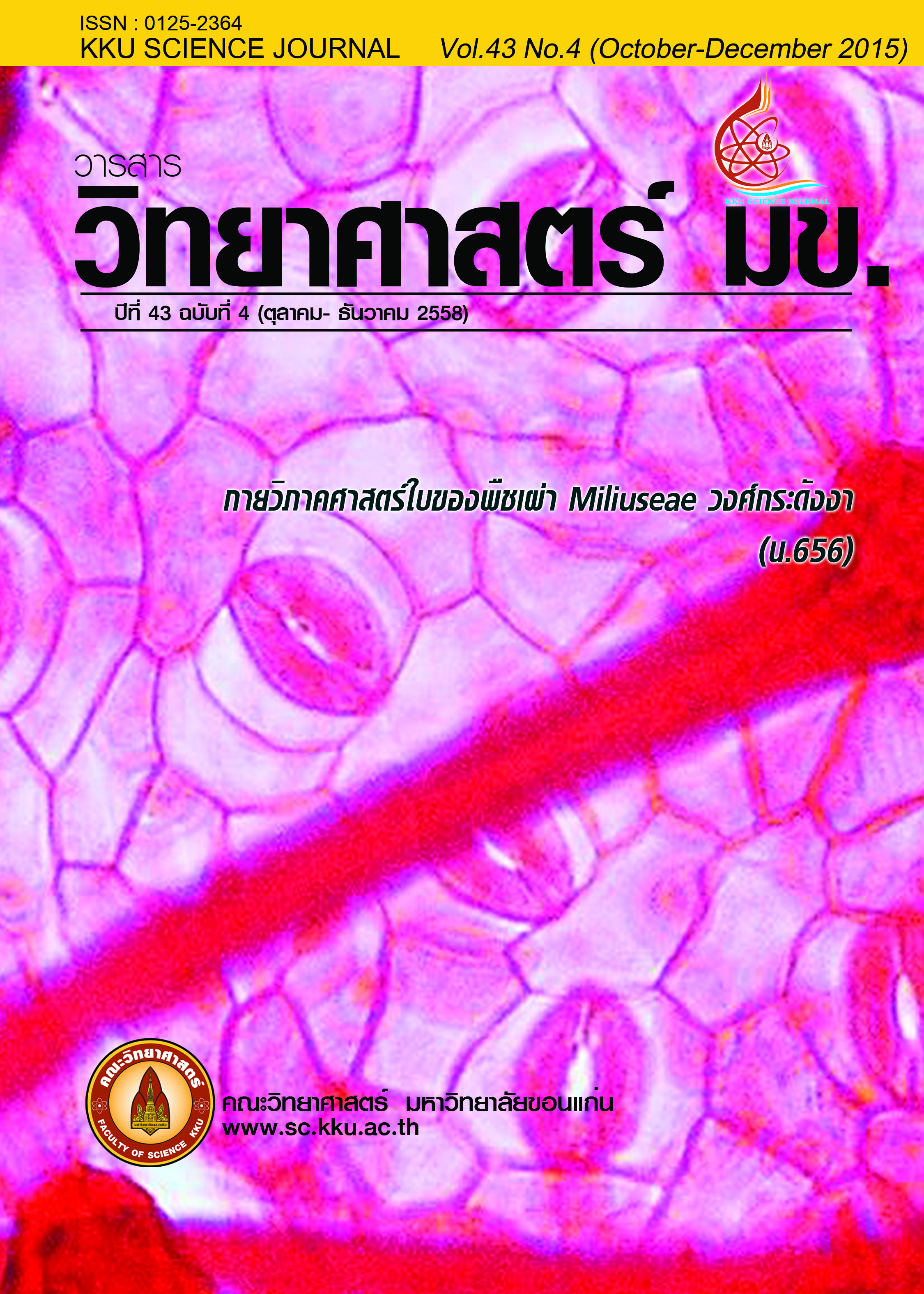Hydrogen Cyanide and Hydrogen Sulfide Gases Removal by Dual Fixed-Film Bioscrubbers System
Main Article Content
Abstract
In this research, a dual fixed-film bioscrubber was applied for hydrogen cyanide and hydrogen sulfide gases removal. Pseudomonas monteilii SUTS 2 and Agrobacterium tumefaciens SUTS 1 are a group of hydrogen cyanide degrading bacteria whereas Acinetobacter sp.MU1_03 and Alcaligenes faecalis MU2_03 are a group of hydrogen sulfide degrading bacteria. The preliminary experiment was set to study elimination capacity of microorganisms degrading hydrogen cyanide and hydrogen sulfide gases. Second experiments were set to study optimum operating parameters such as the height of packing media, mixed-gases flow rate, and empty bed retention time. After that, the optimum efficiency of dual fixed-film bioscrubber system in long-term operation was studied for 72 hrs. The results show that these bacteria exhibited the efficiency more than 90% gases removal. The suitable operating parameters were 16 cm of packing media height, 204 ml/min of mixed-gases flow rate, and 132 sec of empty bed retention time. The optimum efficiency of the dual fixed-film bioscrubbers were 96% hydrogen cyanide gas removal and 98% hydrogen sulfide gas removal when gases loading rate and gases eliminate capacity of hydrogen cyanide were 15.60 g/m3•h and 15.06 g/m3•h, and that of hydrogen sulfide were 88.70 g/m3•h, 86.85 g/m3•h, respectively.
Article Details

This work is licensed under a Creative Commons Attribution-NonCommercial-NoDerivatives 4.0 International License.


